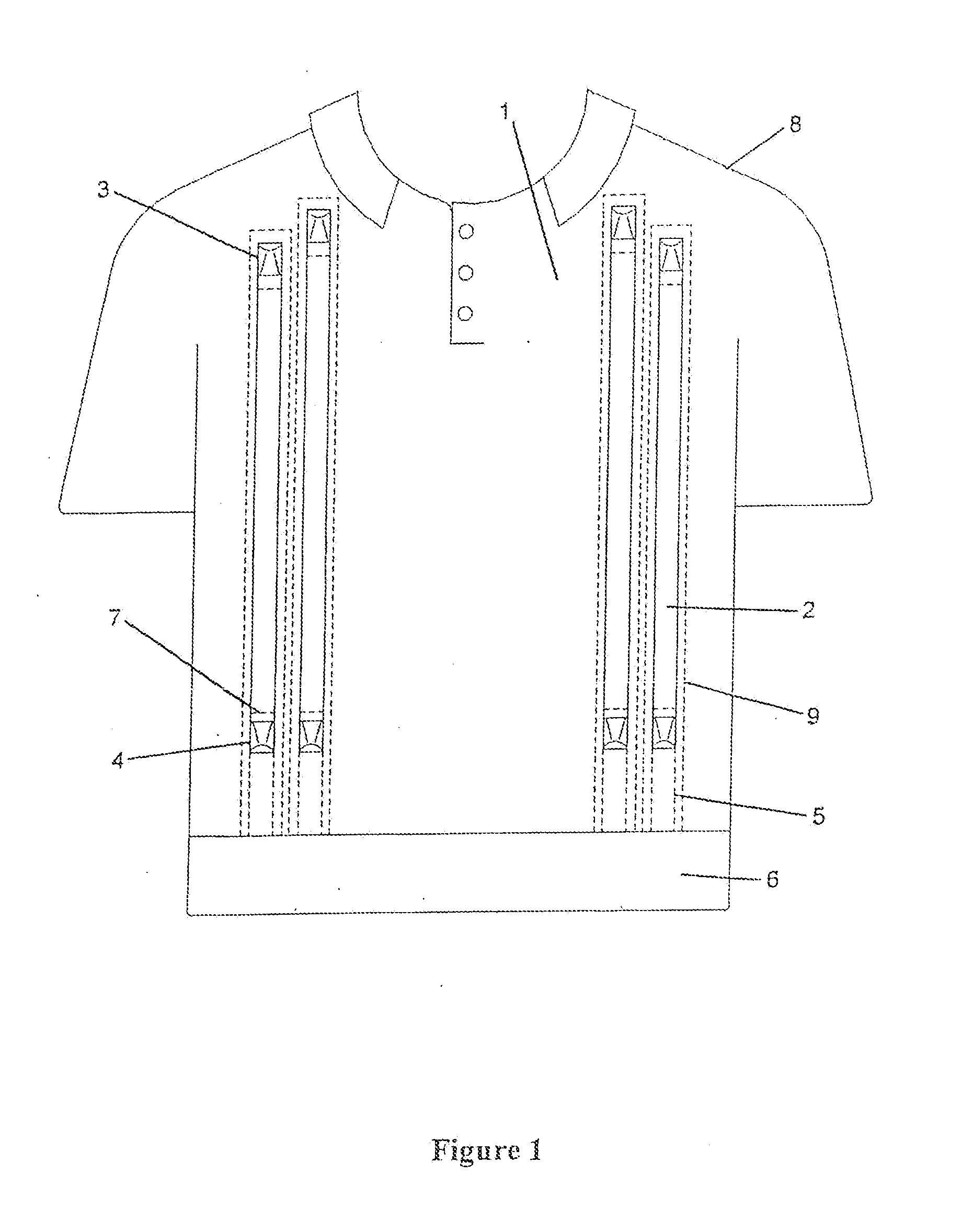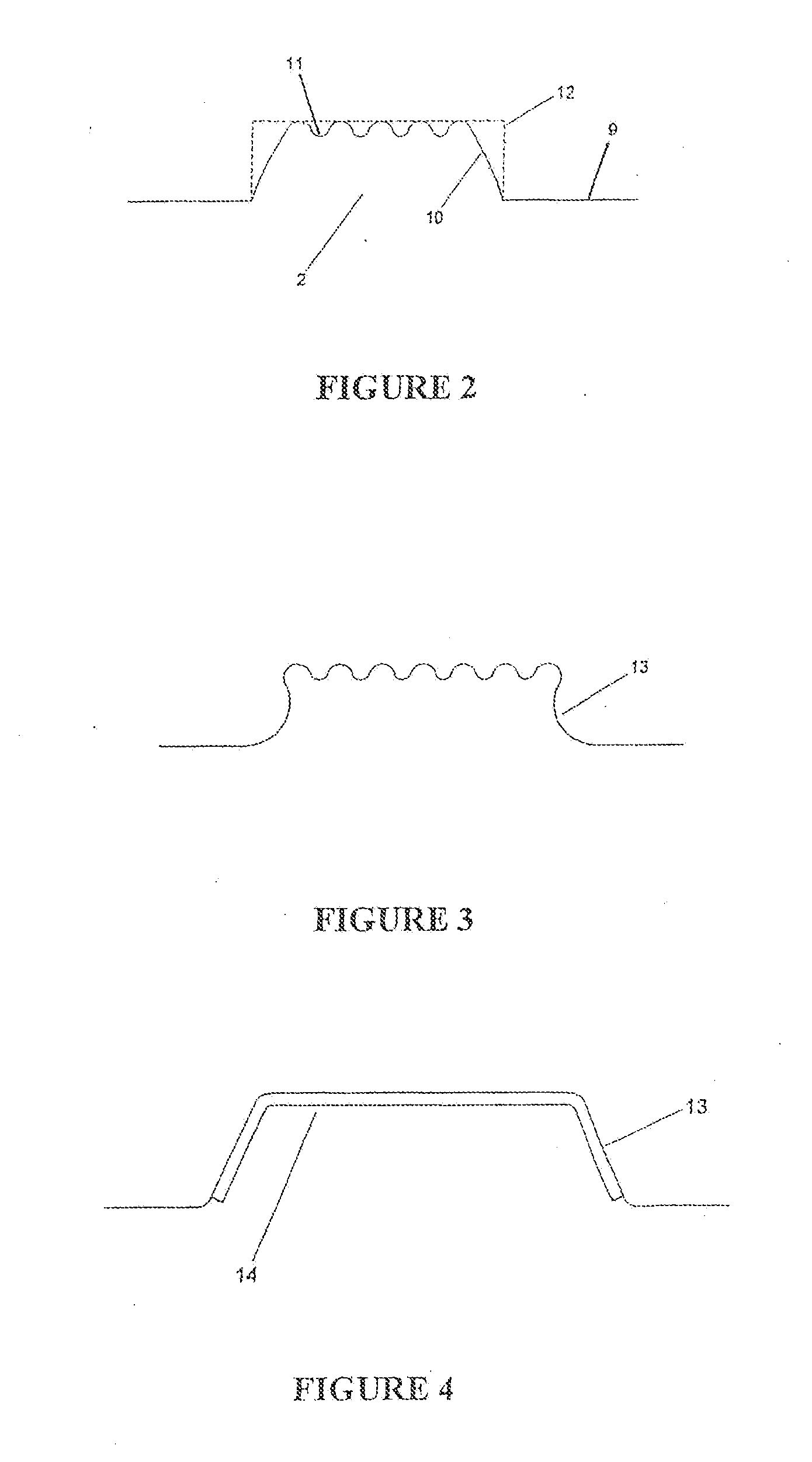Garment ventilation structure
a ventilation structure and garment technology, applied in the field of garments, can solve the problems of poor cooling, perspiration and discomfort of shirt wearers anywhere on the body, and achieve the effect of improving wearer comfor
- Summary
- Abstract
- Description
- Claims
- Application Information
AI Technical Summary
Benefits of technology
Problems solved by technology
Method used
Image
Examples
Embodiment Construction
[0049]Repeated use of reference numbers in the present specification and drawings is intended to represent the same or analogous features of the invention.
[0050]It is to be understood that to one skilled in the art that the following is a description of the exemplary embodiments only and is not intended as limiting the broader aspects of the present invention, which broader aspects are embodied in the exemplary fabrication. For illustrative and descriptive clarity only key items are included in the drawings. Details of trim and extraneous flanges for attachment to the apparel itself are shown only where necessary for clarity.
[0051]The present invention is directed to sports shirts fabricated with integral ventilation channels. Referring to FIG. 1, a sports shirt 1, is shown with integral ventilation channels 2, upper opening eyelet 3 and lower opening eyelet 4. For the purposes of descriptive clarity, only the front view of the sports shirt is shown and similar channels can be assum...
PUM
 Login to View More
Login to View More Abstract
Description
Claims
Application Information
 Login to View More
Login to View More - R&D
- Intellectual Property
- Life Sciences
- Materials
- Tech Scout
- Unparalleled Data Quality
- Higher Quality Content
- 60% Fewer Hallucinations
Browse by: Latest US Patents, China's latest patents, Technical Efficacy Thesaurus, Application Domain, Technology Topic, Popular Technical Reports.
© 2025 PatSnap. All rights reserved.Legal|Privacy policy|Modern Slavery Act Transparency Statement|Sitemap|About US| Contact US: help@patsnap.com



